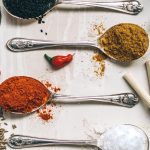In a day and age where more and more of us are turning to holistic methods of healing our bodies and minds, the Āyurvedic way could be the answer to all our health conundrums. The key, it says, is to know thy Self!
What, When and Where?
Āyurveda is one of the World’s oldest health systems, the earliest origins of which have been traced back to the ancient Vedic texts, written some 5000 years ago in the area known as the Indus Valley, recognised as the birthplace of many of the founding philosophies of Yoga, Buddhism, Hinduism and many more.
The literal translation of the word comes from the Sanskrit “Āyu” meaning life and “Veda” meaning knowledge or, more accurately, science. According to the Āyurvedic system, health equals harmony of the mind, the body and the spirit. It is essentially a complete healthcare system based on our nature (or prakriti) and our relationship with it. Āyurveda is therefore closely linked to Yoga not only through history, but also through practice. Yoga is used by Āyurveda practitioners as a form of therapy for both body and mind, a spiritual science that helps cleanse and balance our entire system and Āyurvedic principles are adopted by yoga practitioners as they naturally become more in tune with a more holistic experience of life.
Sebastian Pole co-founder of Pukka Herbs and author of A Pukka Life writes:
Āyurveda teaches respect for nature and appreciation of life by showing how we can empower ourselves as individuals. It understands that our own health cannot be considered as separate from that of our family, work, society and planet. In other other words, Āyurveda works with real, deep, integrated health.
Elementary, My Dear Watson!
The Āyurvedic health system is built on the belief that all living entities are made up of five elements: Ether (Aakash), Air (Vāyu), Fire (Agni), Water (Jala) and Earth (Pṛithvī). These core elements are present in varying quantities and therefore the elemental make up of each individual is uniquely different. It is believed that if we can learn and understand our own unique make up, we can harness each of these properties in order to lead a balanced and healthy life. So, Āyurveda requires a bit of detective work!
How do we work out what our make up is?
In Āyurveda there are three main constitutions (or dosha) that most living beings display in dominance, we’ll look at them in more detail below. We all possess qualities of all three , however, one or two will usually be stronger. It is believed that our dosha is genetic and that we possess those particular attributes from the moment we are born. Our behavioural patterns and our sensitivity to illness and disease is determined by our individual make up.
The tridosha theory defines the particular attributes that each individual possesses and also helps us to understand what we are lacking and what we have too much of. The idea is to consistently balance our unique make up in order to find perfect natural health. A bit like how we are constantly working on our yamas and niyamas in yoga, Āyurveda gives us the guidelines we need to build a better and healthier lifestyle all round.
Here is a brief breakdown of the three dosha — maybe you can tell which one you are from these simple characteristics:
Vāta (Ether – Air)
Cold, light, dry, rough, irregular, changeable.
Vāta people tend to be creatively minded, enthusiastic and energetic when in balance. Movement and change are integral parts of their make up. Physically, they are lean and agile with dry skin and hair. Their hands and feet tend to be cold and rough. When out of balance, Vāta constitutions are prone to anxiety, insomnia and weight loss.
Pitta (Fire – Water)
Hot, light, oily, sharp, intense, fast.
When in balance, Pitta constitutions are full of energy and very passionate both in body and mind. Their digestive system is very good and they have a fierce appetite. Most Pitta people are of average height and build. Out of balance, it is common for Pitta to be irritable, suffer hormonal imbalances and heartburn.
Kapha (Water – Earth)
Cold, heavy, wet, solid, soft, slow.
Love and compassion defines a balanced Kapha constitution. Good sleepers with regular digestion, they are the epotime of strength and stability. They tend to have strong body types, thick hair and smooth skin. Kapha out of balance can be greedy and stubborn and has a tendency to produce excess mucus and gain weight.
There are countless free dosha tests online that you can do to determine which one or ones you are and most of them will give you a brief breakdown of your individual mind/body constitution. You’ll be surprised at how accurate some of the information can be!
I’ve Got My Dosha! Now What?
Working out our dosha is the easy bit, now comes the tricky part. Firstly, it’s good to remember that Āyurveda is all about balance and harmony. This means that anything that goes into our bodies or any exercise that we choose to undertake should take into account our unique constitution.
If, for instance, you are definitely a Pitta type and you are suffering from excess heat, this could mean you are over-indulging in spicy foods and competitive sports or situations. The balancing thing to do here is to avoid these heating external elements and instead introduce more cooling foods or flavours and maybe include meditation or gentle yoga to your daily routines. Similarly, if you are of Kapha constitution then you may need fiery foods and challenging situations in order to bring you into balance and speed up your immune system.
Only Time Will Tell
Another integral part of the Āyurvedic health system is adapting to different times of day and to seasonal changes. This means that depending on our constitution, we may find ourselves having to adjust our daily, weekly and even monthly routines according to the time of day or time of year. Kapha, for instance, is dominant between the hours of 6am to 10am and 6pm to 10pm. Pitta then becomes the ruler during the hours between 10am and 2pm and 10pm and 2am. Vāta, on the other hand, is most powerful from 2pm to 6pm and 2am to 6am.
Furthermore, the three dosha are more dominant through different stages of our lives, with childhood being a more Kapha-strong period, adulthood being of Pitta strength and Vāta takes hold as we enter our old age.
Finding Your Āyurvedic System
There are plenty of resources about the ins and outs of Āyurveda, but if you are serious about finding out more about your unique Self, then it is advisable to seek the assistance of an Āyurveda specialist who will be able to inform and guide you in your particular health journey.
Āyurveda is experiencing a resurgence both in it’s homeland and in the rest of the world and it is not hard to find a knowledgeable Āyurvedic doctor, or Vaidya, these days. I’d recommend Anu at Jivita Ayurveda — she is a wonderfully warm Scandinavian with a passion for sharing her Āyurvedic knowledge!
If you’ve been following an Āyurvedic lifestyle, how has it changed your health and relationships? What are your favourite Āyurvedic recipes? We’d love to hear from you and share your experiences so please feel free to comment below.













